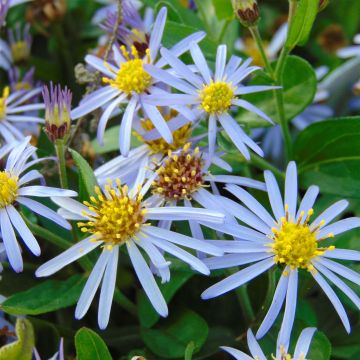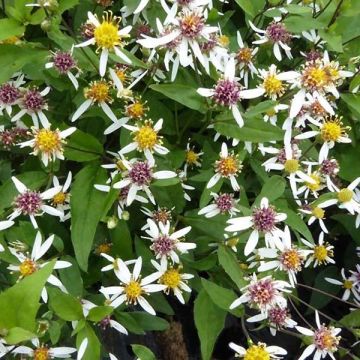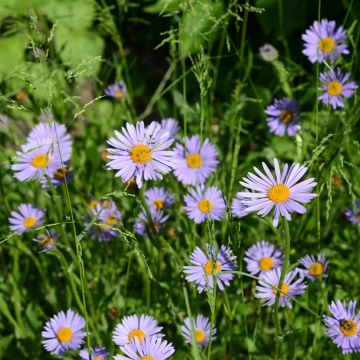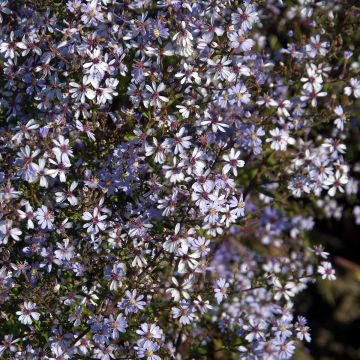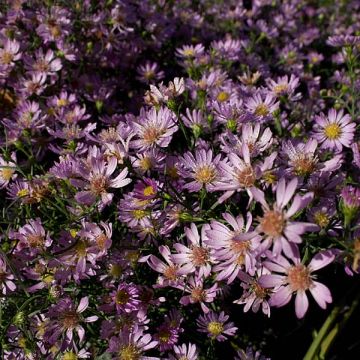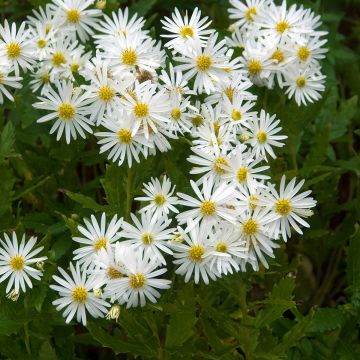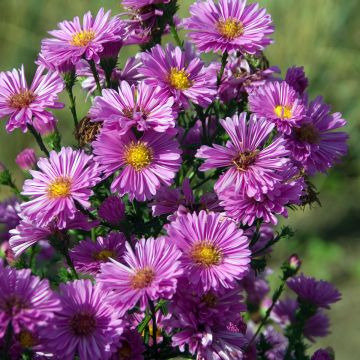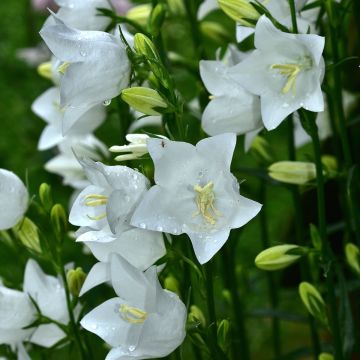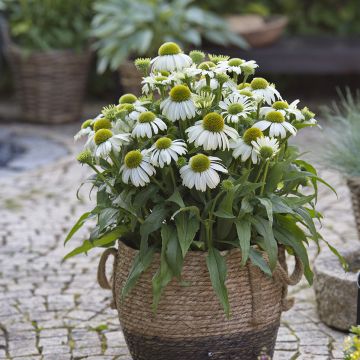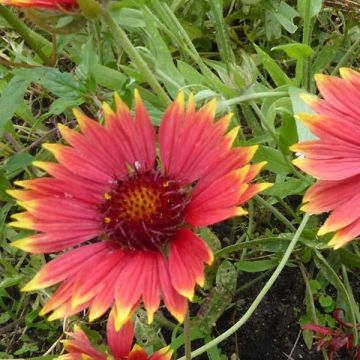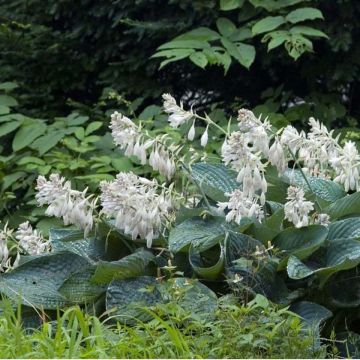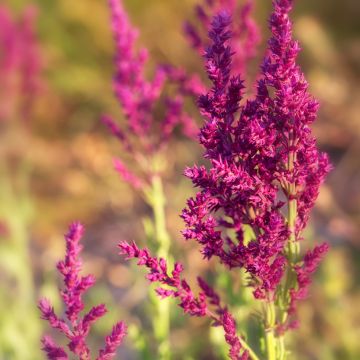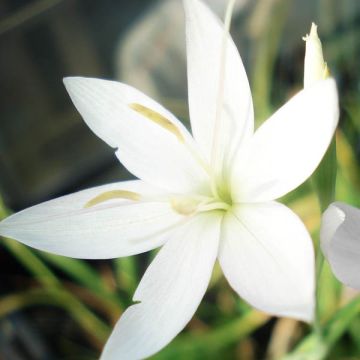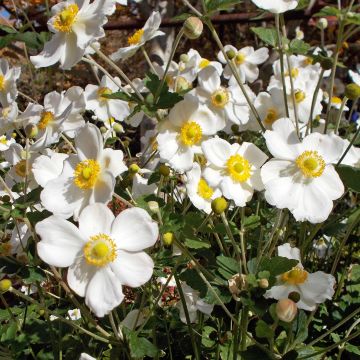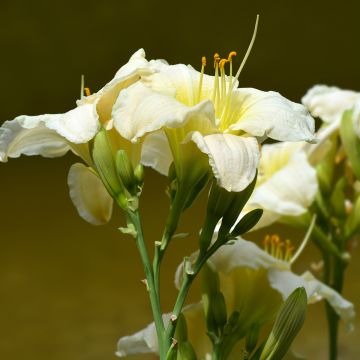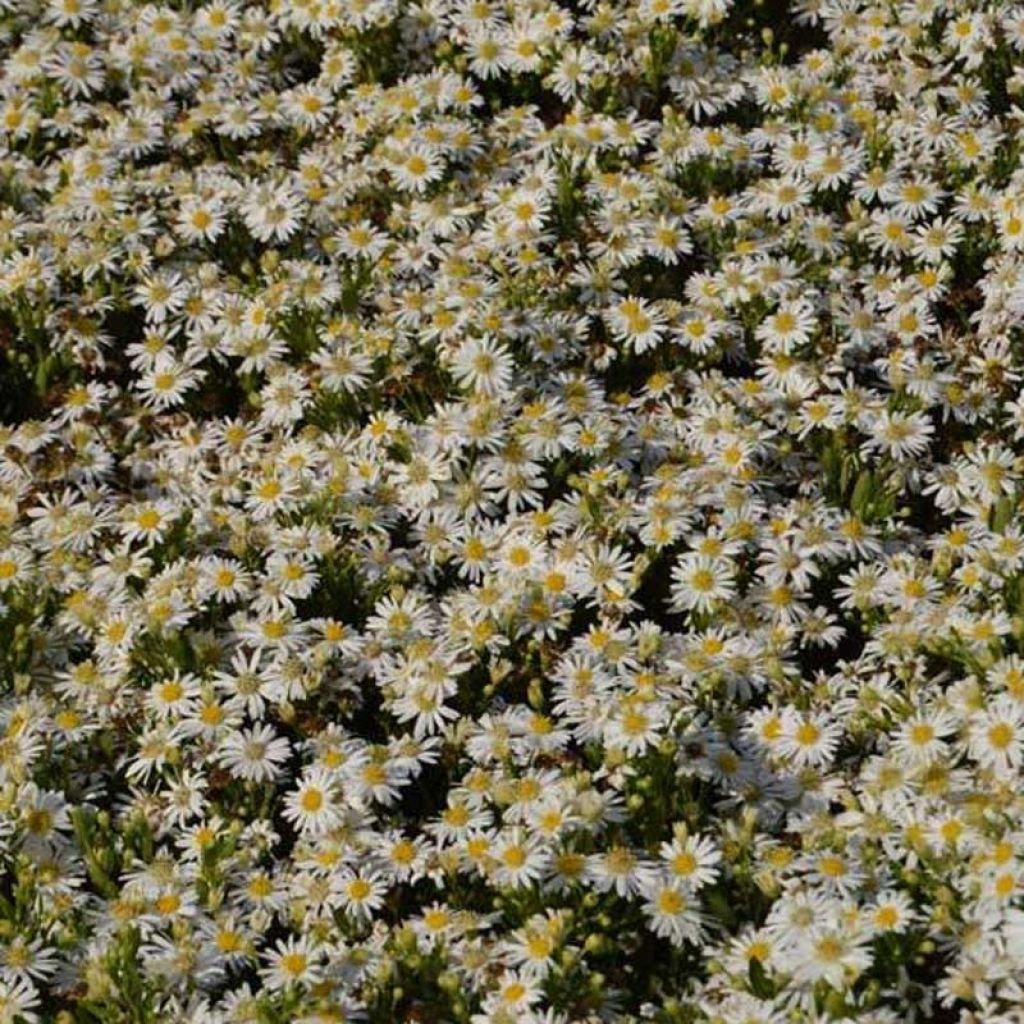

Aster ageratoides Starshine
Aster ageratoides Starshine
Aster ageratoides Starshine
Japanese Aster, White Michaelmas Daisy, Asian Starwort
Well taken and well flowered.
Christine, 28/11/2022
This item cannot be shipped to the selected country
Delivery charge from €5.90
More information
Schedule delivery date,
and select date in basket
This plant carries a 12 months recovery warranty
More information
We guarantee the quality of our plants for a full growing cycle, and will replace at our expense any plant that fails to recover under normal climatic and planting conditions.
From €5.90 for pickup delivery and €6.90 for home delivery
Express home delivery from €8.90.
Does this plant fit my garden?
Set up your Plantfit profile →
Description
Aster ageratoides Starshine is an easy-going perennial that is extremely floriferous even in partial shade, reliable and particularly resistant to powdery mildew. This variety is unique in that it blooms tirelessly, from summer to autumn, offering a multitude of brilliant white stars with golden hearts that fade without disfiguring the plant. Bushy and compact, this generous-tempered aster is an ideal plant in a large bed, in a country-style or naturalistic garden. It also makes beautiful flowering pots for the terrace or balcony.
Aster ageratoides is a perennial plant native to northern Myanmar, southwestern China and Tibet. It belongs to the Asteraceae family. The 'Starshine' variety stands out for its exceptional floribundity, even in slightly shaded areas, and its compact habit. This plant with weak suckering forms a dense and regular clump, composed of upright, stiff and closely packed stems, with deciduous, slightly rough, matte-green, deeply cut foliage. When mature, this variety will measure approximately 40 cm (16 in) in all directions. From July until October-November, countless small flowers appear with very fine white ligules, like seedlings of white daisies with yellow hearts. Very perennial, this variety is perfectly resistant to cold and powdery mildew, which often disfigures asters. Its above-ground vegetation dies in winter and reappears in spring.
Plant Aster ageratoides Starshine in any soil, in full sun or partial shade. This variety even tolerates poor-quality soil like backfill soil or compact, clayey soil. In the garden, place it at the front of your flower or shrub beds, or in a large flower border. For example, associate it with lady's mantle, heucheras, or small grasses (sun-loving Stipa, Carex or Japanese sedge, in partial shade). Its unrestrained flowering with a beautiful lightness attracts pollinating insects and promotes biodiversity in the garden. The flowering stems are very pretty in a vase in a floral arrangement, in the company of September roses.
The Aster genus offers a large number of species, represented by a multitude of floriferous varieties. There are varieties of all sizes, in an extremely rich range of colours. Several species are associated with each season.
Report an error about the product description
Flowering
Foliage
Plant habit
Botanical data
Aster
ageratoides
Starshine
Asteraceae
Japanese Aster, White Michaelmas Daisy, Asian Starwort
Cultivar or hybrid
Other Asters
Planting and care
Plant Aster ageratoides Starshine in any rather fresh soil; it even accepts poor-quality soil such as backfill soil, or compact and clayey soils. But while it adapts to lean and relatively dry soils, it will require fertilisation in April, more frequent watering in summer, and mulching to maintain freshness at its base. In borders, respect a spacing of at least 50 cm (20 in) between plants. At the end of flowering, cut back the clump to 10 cm (4 in) to maintain a compact habit. Divide the clumps every 2 to 3 years to keep vigorous stumps and propagate this wonderful plant throughout the garden.
Plant it in a sunny location that will allow it to express its full potential (even though it also grows and flowers in semi-shaded areas). Its robust foliage seems unaffected by powdery mildew, even in hot weather. Its only requirement is not to compete with other perennials with a strong root system. Prune dry branches in winter.
Planting period
Intended location
Care
-
, onOrder confirmed
Reply from on Promesse de fleurs
Summer flowering perennials
Haven't found what you were looking for?
Hardiness is the lowest winter temperature a plant can endure without suffering serious damage or even dying. However, hardiness is affected by location (a sheltered area, such as a patio), protection (winter cover) and soil type (hardiness is improved by well-drained soil).

Photo Sharing Terms & Conditions
In order to encourage gardeners to interact and share their experiences, Promesse de fleurs offers various media enabling content to be uploaded onto its Site - in particular via the ‘Photo sharing’ module.
The User agrees to refrain from:
- Posting any content that is illegal, prejudicial, insulting, racist, inciteful to hatred, revisionist, contrary to public decency, that infringes on privacy or on the privacy rights of third parties, in particular the publicity rights of persons and goods, intellectual property rights, or the right to privacy.
- Submitting content on behalf of a third party;
- Impersonate the identity of a third party and/or publish any personal information about a third party;
In general, the User undertakes to refrain from any unethical behaviour.
All Content (in particular text, comments, files, images, photos, videos, creative works, etc.), which may be subject to property or intellectual property rights, image or other private rights, shall remain the property of the User, subject to the limited rights granted by the terms of the licence granted by Promesse de fleurs as stated below. Users are at liberty to publish or not to publish such Content on the Site, notably via the ‘Photo Sharing’ facility, and accept that this Content shall be made public and freely accessible, notably on the Internet.
Users further acknowledge, undertake to have ,and guarantee that they hold all necessary rights and permissions to publish such material on the Site, in particular with regard to the legislation in force pertaining to any privacy, property, intellectual property, image, or contractual rights, or rights of any other nature. By publishing such Content on the Site, Users acknowledge accepting full liability as publishers of the Content within the meaning of the law, and grant Promesse de fleurs, free of charge, an inclusive, worldwide licence for the said Content for the entire duration of its publication, including all reproduction, representation, up/downloading, displaying, performing, transmission, and storage rights.
Users also grant permission for their name to be linked to the Content and accept that this link may not always be made available.
By engaging in posting material, Users consent to their Content becoming automatically accessible on the Internet, in particular on other sites and/or blogs and/or web pages of the Promesse de fleurs site, including in particular social pages and the Promesse de fleurs catalogue.
Users may secure the removal of entrusted content free of charge by issuing a simple request via our contact form.
The flowering period indicated on our website applies to countries and regions located in USDA zone 8 (France, the United Kingdom, Ireland, the Netherlands, etc.)
It will vary according to where you live:
- In zones 9 to 10 (Italy, Spain, Greece, etc.), flowering will occur about 2 to 4 weeks earlier.
- In zones 6 to 7 (Germany, Poland, Slovenia, and lower mountainous regions), flowering will be delayed by 2 to 3 weeks.
- In zone 5 (Central Europe, Scandinavia), blooming will be delayed by 3 to 5 weeks.
In temperate climates, pruning of spring-flowering shrubs (forsythia, spireas, etc.) should be done just after flowering.
Pruning of summer-flowering shrubs (Indian Lilac, Perovskia, etc.) can be done in winter or spring.
In cold regions as well as with frost-sensitive plants, avoid pruning too early when severe frosts may still occur.
The planting period indicated on our website applies to countries and regions located in USDA zone 8 (France, United Kingdom, Ireland, Netherlands).
It will vary according to where you live:
- In Mediterranean zones (Marseille, Madrid, Milan, etc.), autumn and winter are the best planting periods.
- In continental zones (Strasbourg, Munich, Vienna, etc.), delay planting by 2 to 3 weeks in spring and bring it forward by 2 to 4 weeks in autumn.
- In mountainous regions (the Alps, Pyrenees, Carpathians, etc.), it is best to plant in late spring (May-June) or late summer (August-September).
The harvesting period indicated on our website applies to countries and regions in USDA zone 8 (France, England, Ireland, the Netherlands).
In colder areas (Scandinavia, Poland, Austria...) fruit and vegetable harvests are likely to be delayed by 3-4 weeks.
In warmer areas (Italy, Spain, Greece, etc.), harvesting will probably take place earlier, depending on weather conditions.
The sowing periods indicated on our website apply to countries and regions within USDA Zone 8 (France, UK, Ireland, Netherlands).
In colder areas (Scandinavia, Poland, Austria...), delay any outdoor sowing by 3-4 weeks, or sow under glass.
In warmer climes (Italy, Spain, Greece, etc.), bring outdoor sowing forward by a few weeks.

































